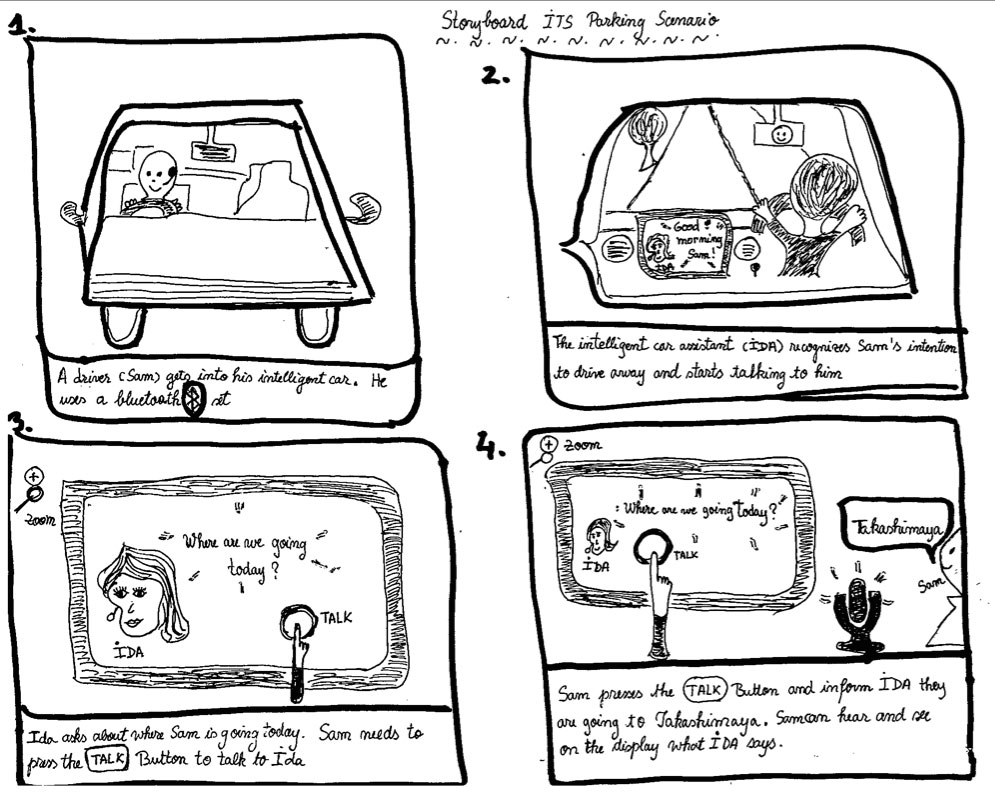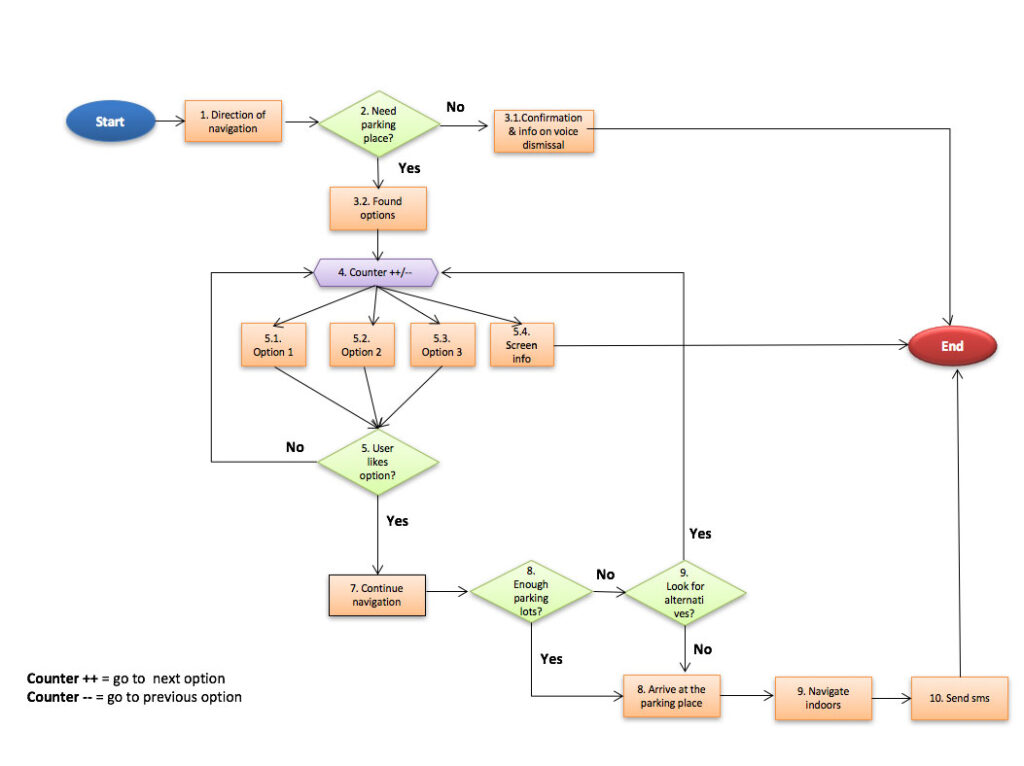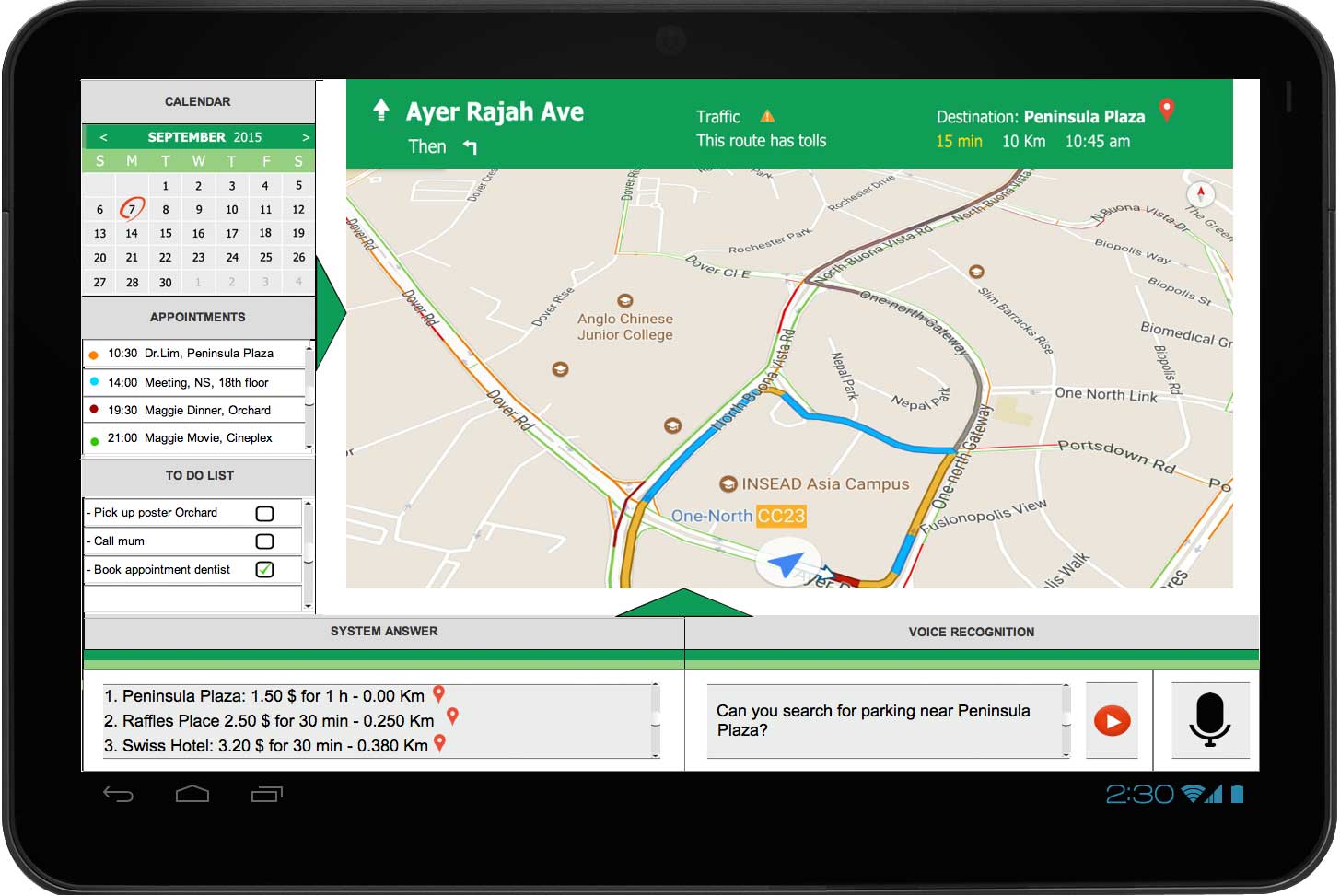IDA: An Intelligent PARKING APP
Sustainable Driving
Ones of the biggest problems modern cities are currently facing are traffic jams and sparse parking availability. Urban traffic experts estimate that 30% of vehicles in downtown areas of major cities are looking for parking and spend 7.8 minute in average to find a spot.
To reduce traffic congestion, fuel expenses and driving time, we created an intelligent parking application that assists drivers with making better parking decision and as such promoting more sustainable driving practices. The project features two novel contributions of our app, namely, the ability to:
- react in real-time changes in parking occupancy
- communicate with drivers using of natural language
Challanges
Cognitive load: An intelligent parking app needs to enable drivers to take the best decision in a cognitive loaded situation, namely while driving
Sustainable driving: The app needs to ensure enough parking lots are available following a sustainable approach
Modality combination: Most driving applications use maps as primarily source of information. How can speech complement the visual information without being redundant or increasing the existing cognitive load?
Noisy environment: Very problematic for in-car conditions are elevated levels of noise. These levels pose a big challenge for applications using speech as input modality.

solutions
Cognitive load
To reduce drivers’ cognitive load we designed the app to manage parking decisions. To do so, the application turns on once the car engine is started and asks about the driving destination. Upon driver’s confirmation, IDA searches for suitable car parks and makes three recommendations to chose from.
The suggestions are ranked by default on distance proximity to destination. However, the driver can change the default (i.e. using speech or the touch screen) to chose a parking lot ranked primarily by price, for example.
The driver can reject the recommendations and request for other parking locations up to 3 times . After that, the app turns into manual mode, i.e. the driver can search manually for available parking of his choice. The interaction flow is shown is figure 2.

Sustainable driving
Unlike E-parking systems, which reserve lots for a nominal fee, IDA’s design follows more sustainable approach:
- after the parking decision is made IDA keeps monitoring the car park availability following a once-per-minute check-up routine. The data is obtained from the Singapore Land Transport Authority (LTA), and it is periodically updated and stored on a server database.
- if the number of lots drops to critical level, i.e. less than 20, IDA re-directs the driver to another parking place. In this way, drivers save costs and parking resources are optimal allocated: parking lots are not kept empty for reservations while other drivers (with no reservation) are struggling to find an empty spot increasing the traffic in the nearby areas

Modality combination
When combining modalities, a frequent problem is information redundancy: modalities are competing for driver’s attention often resulting in a poor UX. In the case of IDA, we chose the main screen to focus on google’s navigation map: firstly, because the map is fundamental for navigation and secondly, because the google maps doesn’t not require ‘learning’ as most people use it daily.
Decision summaries and alerts requiring a quick response are presented using speech. In this way, both speech and visual modalities are separated, each one fulfilling a different task.
The natural language dialogue is captured on two parallel panels placed at the bottom of the screen and serves for feedback purposes; on the right: the user input (the voice recognition); on the left: the system’s answer. The driver has the option to minimize/close the panels to avoid being distracted from navigation.
Further, the design of the screen includes a personal calendar, an appointment schedule and a to-do list.
Noisy environment
Inside a car, the environment is usually noisy. Be it because of the traffic, radio or weather conditions, e.g rain. The noisy can affect user’s verbal interaction with the app that is based on automatic speech recognition (ASR).
One possible solution we came up with, was the incorporation of a speech-to-talk button for the entire duration of the speech input. The button is conveniently placed on the steering wheel as shown in the picture below (see fig. 4)

About the project
This project was part of larger collaboration with several researchers from automotive supplier Continental and the Technical University of Munich’s Create centre in Singapore (TUM CREATE).
More details can be found in:
